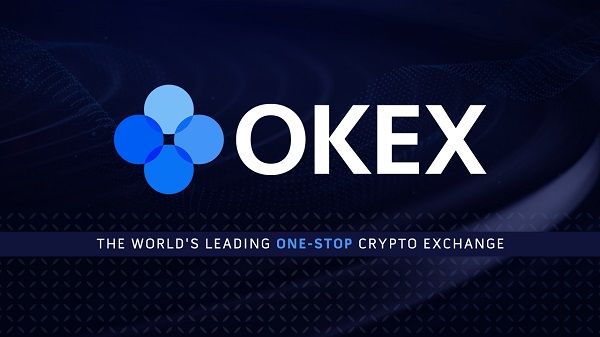
Ever since a prominent Chinese Ethereum miner announced his intention to resist the upcoming Ethereum merge and create a new, parallel network and cryptocurrency, the idea has begun to gain some traction. But how far can it really go?
The miner, Chandler Guo, launched a campaign last week to draw opposition to the merge—the network’s imminent and much-anticipated transition to Ethereum 2.0 and proof of stake. Guo plans to hard fork the Ethereum network once it transitions to proof of stake next month, and in doing so create a spinoff, proof-of-work version of the network, called ETHW.
Experts on the subject seem unconvinced that any Ethereum network proponents are prepared to turn that provocative concept into a reality. But the idea has now gained a notable ally in Tron founder and CEO Justin Sun, who said yesterday that his crypto exchange Poloniex will support the fork. Sun’s move isn’t sitting well with some Ethereum supporters and developers, who must now begrudgingly contend with the possible fork and its potential consequences.
“This public support for ETHW is harmful to the Ethereum ecosystem,” Daniel Hwang, head of protocols at Stakefish, a leading staking pool, told Decrypt. “It is damaging to further fracture and complicate the ecosystem. I find it alarming that some of us […] are ignoring the very clear weight large infrastructure providers can have,” he said, while emphasizing that he spoke only for himself and not on behalf of his company. “The ecosystem listens to these leaders.”
Currently, Ethereum functions on a proof-of-work model that allows so-called miners to create new ETH by directing huge amounts of computer power at difficult-to-solve puzzles. The merge will transition Ethereum to a faster, more scalable proof-of-stake model, in which new ETH is created by pledging, or staking, large quantities of pre-existing ETH.
The merge will therefore end the practice of Ethereum mining, depriving ETH miners of a reliable source of income and stranding them with costly and now potentially useless specialized hardware.
Guo and other miners hope ETHW will provide a solution to this predicament, by preserving the old proof-of-work Ethereum network post-merge, and thus permitting ETH miners to continue to generate cryptocurrency with existing equipment.
What is ETHW?
If created, ETHW would be an entirely distinct network and cryptocurrency from Ethereum, with no assumed value, infrastructure, or utility. Only if it could establish a market value and demand comparable to Ethereum’s, would it be comparably valuable to mine.
Earlier this week, the research arm of crypto exchange BitMEX released a blog post touting ETHW’s potential market value, as “an exciting opportunity for traders and speculators in the short to medium term.”
The post cited the importance of “narratives and noise” in the crypto space, and predicted that ETHW is likely to generate much excitement upon its debut—excitement that can be leveraged into profitability for early investors.
Speaking to Decrypt, a representative for BitMEX Research conceded that when it comes to ETHW’s long-term utility, it’s hard to see how the network could come close to approaching Ethereum’s demonstrated value. That doesn’t mean, though, that ETHW is dead-on-arrival.
“ETH2 obviously looks set to be the winner. As for the staying power of ETHW over the long term, that is hard to say,” the BitMEX representative told Decrypt. “Coins tend to be quite resilient and survive. BCH and ETC are still around today. Therefore, ETHW may also be around for the long term.”
Bitcoin Cash (BCH) and Ethereum Classic (ETC) are alternative versions of Bitcoin and Ethereum, respectively, created during previous forks of both networks. Both are worth fractions of the cryptocurrencies they deviated from; yet, they’re still around.
“As for the value [of ETHW], who knows?” the BitMEX representative said. “Maybe three months of high volatility, then a slow death to 1% of the ETH price over four years… that is a possible outcome.”
The potential of such an outcome highlights the issue of ETHW’s utility; if Guo and other miners are hoping to use ETHW to recreate the profits of ETH mining, they’ll have to recreate Ethereum’s market value, a formidable task.
Poloniex announced yesterday that it will list ETHW on its trading platforms, starting next week. The move marks the first endorsement of the cryptocurrency by a major industry player; it is perhaps no coincidence that Poloniex is funded by Sun, a noted detractor of (and nuisance to) Ethereum co-founder Vitalik Buterin.
While it’s unclear what impact, if any, Poloniex’s endorsement will have on ETHW’s market value and staying power, some felt the announcement was irresponsible, no matter the outcome. Those inside the Ethereum Foundation, however, claim to not be concerned about ETHW’s long-term prospects.
“I think that ETHW is unlikely to gain much traction at all,” said Ethereum core developer Preston Van Loon to Decrypt. “Sure, ETHW could be done realistically, but I expect that it will be unsustainable.There will not be enough buyers to absorb the constant sell pressure from miners and the currency will tumble to zero.”
Ethereum’s core developers have thus far unanimously supported the network’s transition to proof of stake. For that reason, brain power could arguably be added to the long list of resources possessed by Ethereum, including utility and established market value, that ETHW is currently lacking.
There are only so many Ethereum developers to go around, after all. When Ethereum forked in 2016 after a disagreement concerning how to handle a massive hack, multiple Ethereum core developers jumped ship to help build Ethereum Classic (ETC). That technical support was instrumental; but this time around, there are no highly-skilled mutineers willing to aid the ETHW cause.
“The technical talent, the Ethereum core dev ‘big brains,’ none of them are supporting a contentious holdout to the [proof-of-stake] merge,” said Hwang. “The level of technical talent that can implement that sort of holdout doesn’t exist.”
According to a statement from Guo shared with Decrypt, the ETHW team currently consists of 60 developers, the majority of which are volunteers. None are Ethereum core developers.
As to the likelihood of the ETHW project gaining sufficient traction to survive, Guo is optimistic that because Ethereum has generated such a huge community, some piece of that community could be easy enough to win over.
“There are now over 20 million Ethereum society supporters, holders, and users,” said Guo. “A few leading miners and pools will continue to operate on the [proof-of-work] chain, and […] ETC may not have enough market penetration to support existing miners.”
The Streisand effect
But even if ETHW is unlikely to flourish, the prospect of its existence still displeases Ethereum’s core developers.
“I’d rather see miners move to Ethereum Classic or other non-Ethereum chains that their hardware is compatible with,” Danno Ferrin, another Ethereum core developer, told Decrypt. “Chain forks are a net negative for the ecosystem. Once a fork proves self-sufficient the damage is done, however.”
ETHW is soon to enter a critical stage, in which it will either accumulate the resources and demand necessary to sustain itself, or peter out. For this reason, Ethereum’s developers are hopeful it receives little support. But they’ve also been very careful to not be too vocal in condemning the network.
“The threat of such a fork has been spoken of in whispers for some time now,” said an Ethereum core developer who wished to remain anonymous in an interview with Decrypt. “All the core people I’ve talked to realize they can’t stop it, but don’t want to grant it legitimacy. Only a lack of market will stop it, and everyone involved is well aware of the Streisand effect.”
The Streisand effect refers to the occasion on which, in 2003, actress and singer Barbra Streisand attempted to suppress an obscure, publicly available aerial photo of her Malibu estate, and in doing so inadvertently attracted the photo hundreds of thousands of viewers. Ethereum’s core developers don’t want ETHW to succeed; but they don’t want to give it any attention, either.
Despite this, some core developers couldn’t resist the temptation to express their frustration at Guo’s enterprise. “Those that feel this fork is needed either ignored the signaling or were wilfully unaware,” said Ferrin. “The merge has been telegraphed for years. I feel no sympathy for investors who didn’t figure that into their [return-on-investment] plan.”
When asked if he was comfortable expressing those feelings on the record, Ferrin replied, “I’d put that on my gravestone.”












